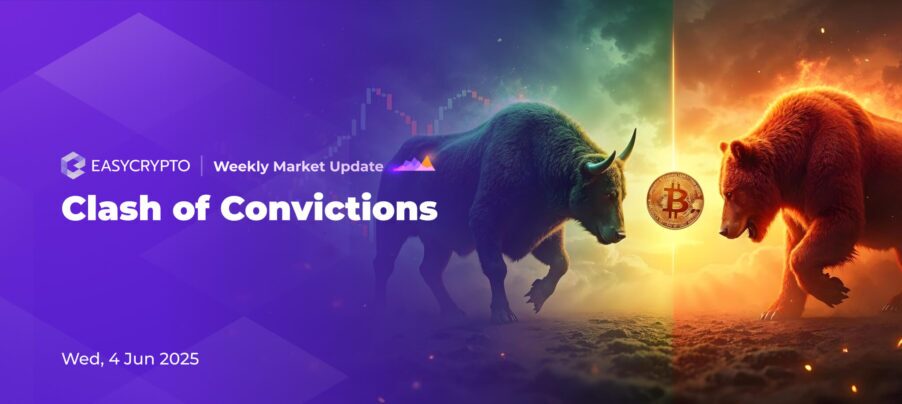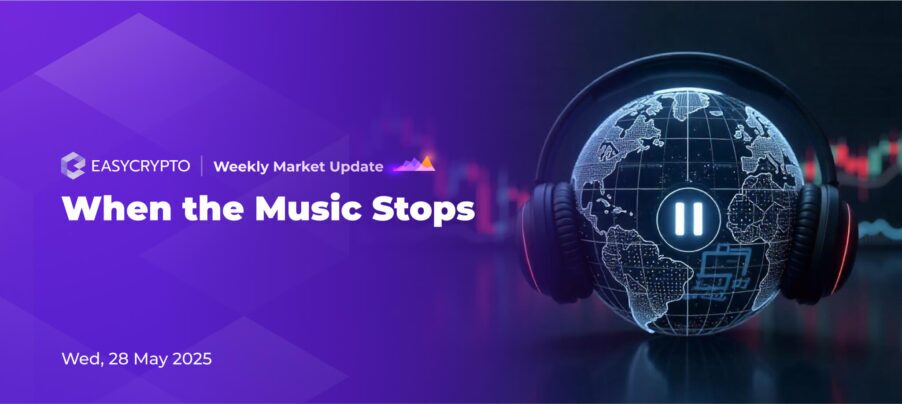Uncovering El Salvador’s Bitcoin Experiment
This article will give you a summary of the reality of adoption for Bitcoin in El Salvador during my visit.


In November 2021, I journeyed to El Salvador along with a team of like-minded individuals. My goal was to investigate the country’s experimental nationwide Bitcoin adoption and to visit the “Adopting Bitcoin Lightning” Summit as well as the LaBitConf conference.
This article will give you a summary of the Bitcoin situation in El Salvador and what I perceived to be the reality of adoption in the country during my visit. Please note that this piece contains my personal opinions, which do not reflect the opinions of Easy Crypto.
What is going on in El Salvador?
At the beginning of June 2021, the President of El Salvador, Nayib Bukele, declared that El Salvador would be adopting Bitcoin as legal tender. His announcement was first broadcasted to the Miami Bitcoin 2021 conference, and came as a complete surprise to the world.
Believed by many to be a result of the influence and work of Jack Mallers(CEO of Strike and the Bitcoin Beach team), this unexpected proposal was pushed through Parliament. The bill was accepted roughly three months later in September of 2021.
There are, of course, multiple other reasons why this move was made in El Salvador. One important fact to note is that the El Salvadorians have already been using bitcoin as well as the US Dollars to transact. From small, daily transactions to large purchases and investments, bitcoin has found its way into the intricate lives of the locals.
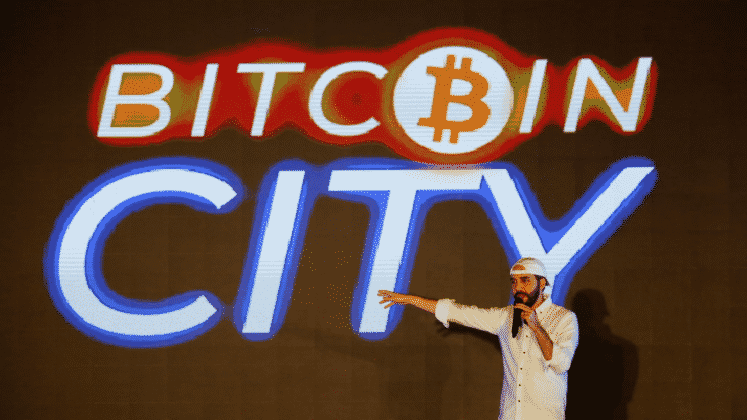
Why does this matter?
El Salvador is one of the few nations in the world that currently do not have their own sovereign currency. We say that their economy has been ‘dollarised’ because of their extensive use of the US dollar.
For the people and businesses in El Salvador, this inadvertently creates some dependency on the US Federal Reserve’s monetary policy. When the US monetary policy says to increase the supply of the currency, El Salvador will also experience at least the same level of inflation as the United States. Additionally, while the US economy generally benefits from monetary expansion of US Dollars, this offers little to no benefit to the El Salvadorians who see the currency slowly decrease in value.
Another national issue that the proposal is trying to address is the problem of unbanked citizens. It is estimated that only around 30% of the population in El Salvador have a bank account. This means the country’s economy runs mostly on cash, where many local stores don’t accept electronic payments. Bitcoin is believed to provide the citizens an easy way to transact digitally without giving them the burden of card processor fees.
Where can you go when you visit?
As things currently stand, the country has a comparatively high rate of gang violence and crime, therefore it is strongly advised you don’t visit certain areas. Having said this, I did not once feel in danger during my visit to the country and found everyone I met to be kind and warm.
The first location I visited was El Tunco, which is a well-known spot for surfers and has been a long established tourist location. Behind a gated and guarded entrance, the small surf town contains a number of local and chain stores and restaurants. The beach is lovely, and as a small trivia, El Tunco is home to a special rock formation in the water, famous for looking like an upside down pig.
(Personally, I don’t see the resemblance… do check it yourself below!)

Here, most stores that I visited accepted Bitcoin. Do note that the new Bitcoin laws don’t actually force a store to accept Bitcoin, if they don’t have the capacity to do so). I made my first Bitcoin Lightning Network payment in El Salvador for a cold-brew coffee— the payment being ‘lightning fast’ and problem free.
Next was El Zonte, known by many as ‘Bitcoin Beach’. The name is a nod to the decade-long local community project, which more recently has encouraged local adoption of bitcoin in the village. The charismatic duo Roman Martínez and Jorge Valenzuela started this project with a fundraising campaign — in bitcoin, of course.
In doing so, they also managed to create an international buzz and welcomed an influx of international visitors and funds into El Zonte. This benefitted local store owners and citizens, who all began accepting Bitcoin payments long before the legal tender laws.
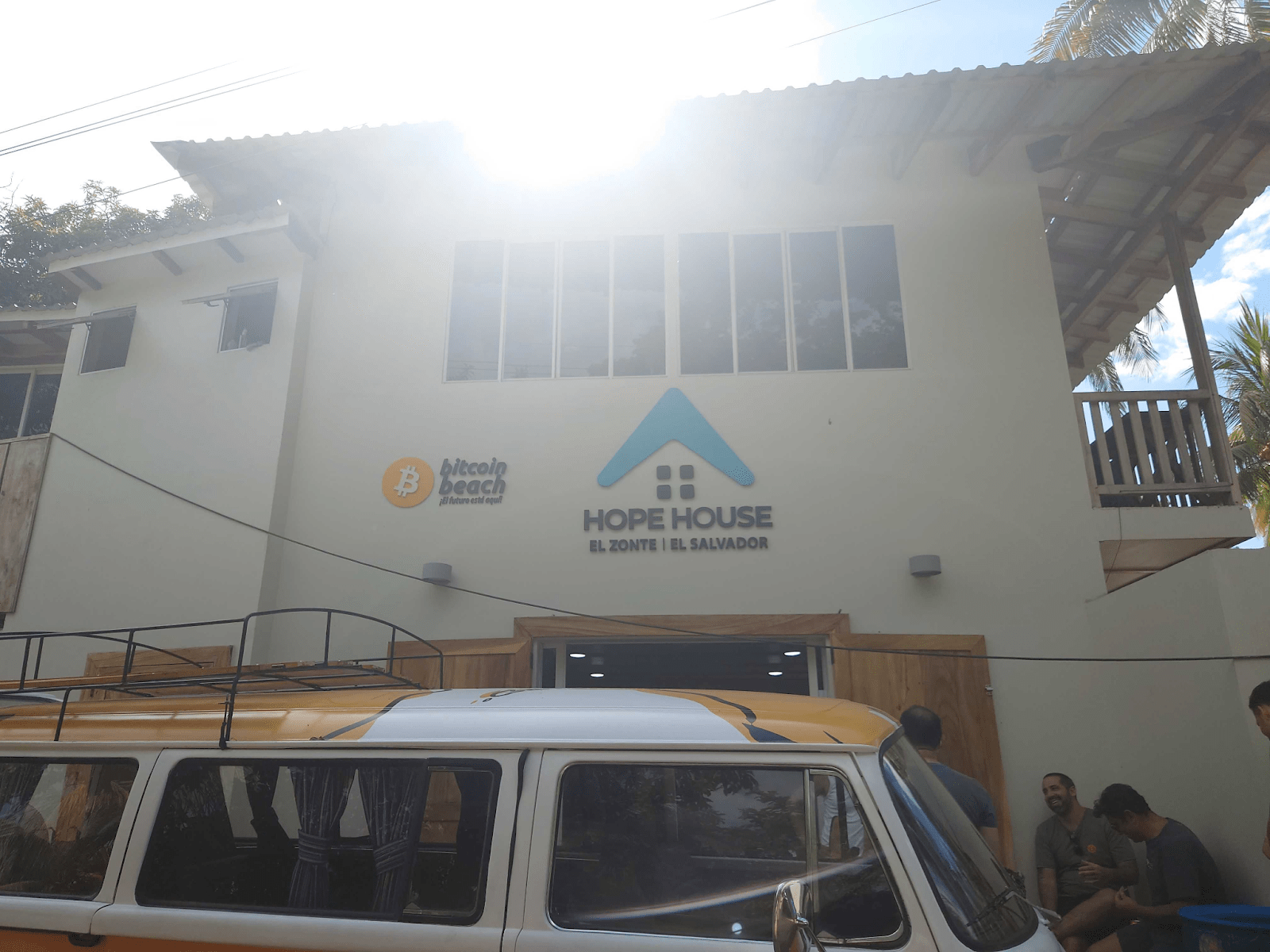
Afterwards, I visited San Salvador, the capital of El Salvador. The city is situated relatively close to a large volcano, aptly named the San Salvador Volcano. This was where both conferences were held.
In stark contrast to El Zonte and El Tunco, San Salvador is a bustling capital city which feels very similar to other cities located in Central and South America. They have Starbucks, McDonalds*, large shopping malls, Denny’s, fancy hotels, and every ‘Western brand’ you can think of and a myriad of local independent retailers.
It is well worth a visit and many tourist areas of the city are safe to walk during the day and even during the evening.
*Did I mention that McDonald’s here accepts bitcoin?
How does bitcoin work in El Salvador?
Most retailers accept two kinds of bitcoin transactions — on-chain Bitcoin Network transactions and the Lightning Network. However, many people prefer to use the Lightning Network, for reasons that on-chain bitcoin transactions take 10 minutes to complete and are more expensive.
The Lightning Network is a Layer-2 solution that builds on top of the Bitcoin Network. You can use whichever Lighting Wallet you prefer. I used both Blue Wallet and Muun during my visit, and found Blue Wallet to be the most seamless experience.
Some retailers in El Tunco used the Strike app as their Bitcoin wallet of choice, which was the best user experience from a customer perspective. The Strike app is complete with QR code scanning for easy transfers and the retailer’s wallet can pick up incoming transactions immediately.
In El Zonte, many retailers seemed to use the ‘Bitcoin Beach Wallet’ created by Galloy, which again works pretty well. One small weakness that I found is that you need to scan their receiving QR code with your smartphone camera app, and this takes you to a page with the actual Lightning Network QR code. To me, this seems like an unnecessary step, which can take up additional time..
In San Salvador (and it would be safe to assume the rest of the country) people are using the Chivo Wallet. This wallet is in fact created and run by the El Salvadorian government. The Chivo Wallet is non-custodial and you can find Chivo ATMs well-distributed around the country.
One fun trivia is that chivo means ‘goat’ in the local tongue. What is not so trivial is that for many people, including myself, the Chivo Wallet had the worst user experience and had also encountered many problems when it was launched nationwide.
For example, both the Chivo ATM and wallet experienced consistent delays in processing transactions. Many transactions that were sent from the Chivo wallet were not recognised by the receiving wallet, which meant that some customers had no choice but to pay again, but with dollars.

In spite, the Chivo Wallet does have room for improvement. After all, the government had only about three months to create a Lightning Network wallet designed to be used by an entire nation. It is fair to say that things could have been much worse for the wallet
When considering why Chivo Wallet is by far the most popular wallet in the country, there are a few reasons, some of which are:
- Free $30 of Bitcoin – When an El Salvadorian signs up for a Chivo wallet account, they receive a free $30 in Bitcoin.
- Money off Fuel – Those using Chivo wallet to pay for fuel receive $0.20 off per gallon, which considering many hourly wages in the country sit at around $3 (so I’m told), that’s a pretty impressive saving.
- Lack of Bitcoin Education – Many El Salvadorians don’t understand Bitcoin very well and some believe that Chivo is simply the only option, as it is heavily advertised by the government and is present on billboards around the capital.
How do locals perceive bitcoin?
The first person I met outside of the airport was my taxi driver who spoke enthusiastically about bitcoin. He had the Chivo app on his mobile phone and whilst he doesn’t understand exactly how bitcoin works, he was a fan of the simple and quick ability to accept digital payments. Other than that, he mentioned the impact bitcoin has had on the country by bringing in more foreign tourists, and the ability for the cryptocurrency to quickly appreciate in value over a short period of time.
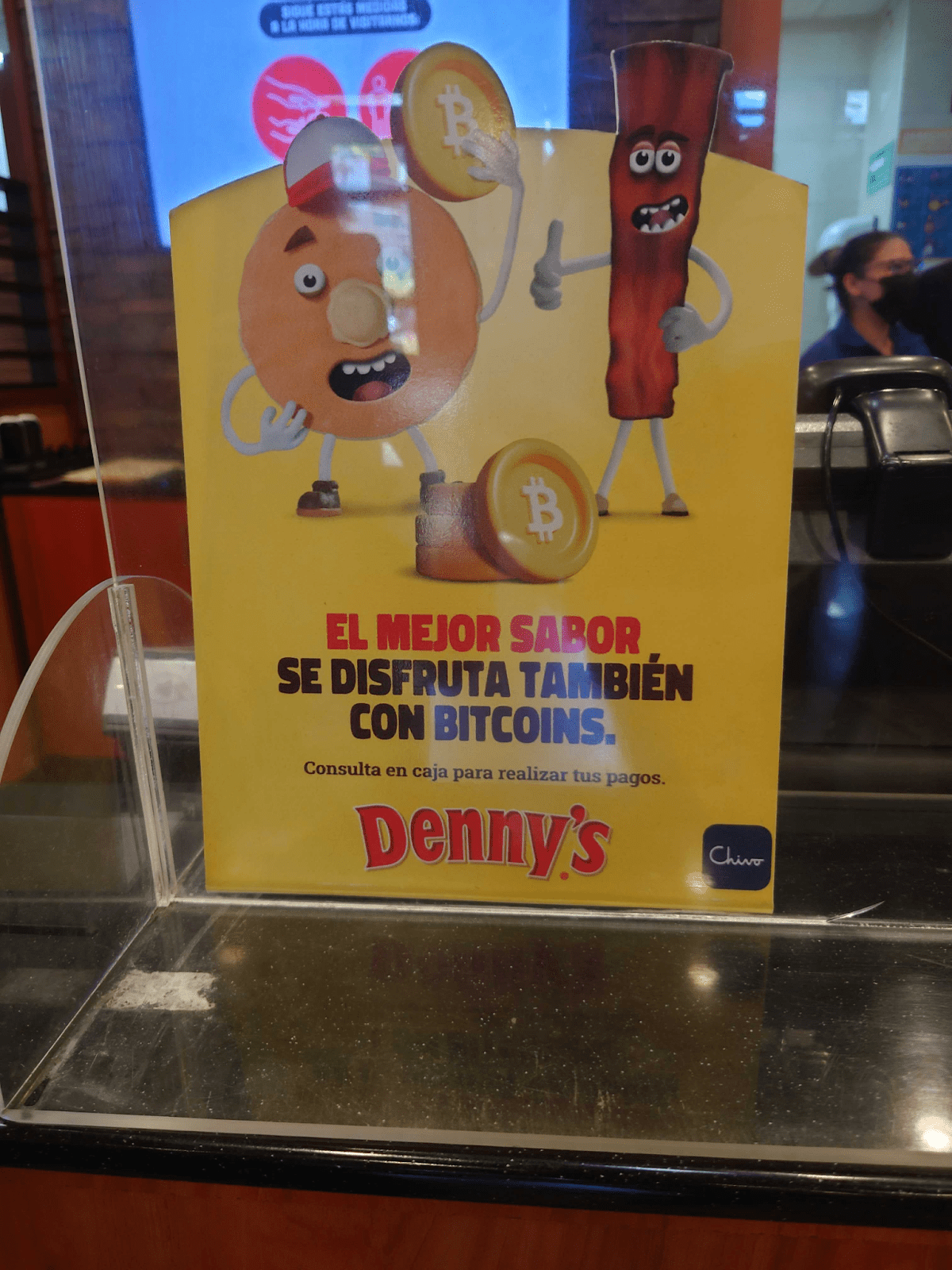
Following this, I spoke with locals I met in the street and in restaurants. I found that generally, peoples’ views on Bitcoin were far more positive than I had expected. I heard stories of people in El Zonte being able to finish building a house due to profits from Bitcoin. Overall many people seemed excited about the opportunities the cryptocurrency brings the country.
It is worth noting that most people I spoke with were in their 30s or younger and it is believed that, in stark contrast, the older populations generally see bitcoin in a far more negative light in general than their younger counterparts.
Overall, around 75% of retailers I encountered were happy to accept bitcoin as payment, with one or two vocally stating it as a preferred currency. early all locals I spoke with were either happy about bitcoin becoming legal tender and had some, or were at least interested in learning more about it.
The Bitcoin Conferences in El Salvador
I visited LaBitConf for a short while on its opening day and it was very similar to any cryptocurrency conferences you may have attended before. Companies like FTX, Algorand, Edge Wallet, Trezor, Binance and many more were present with stalls and speakers on the main stage. Overall the conference was very colourful in design and positivity was everywhere.
The ‘Adopting Bitcoin’ summit was a very different experience; hosted by Galoy, the goal of the summit can be best summarised by co-host Nicolas Burtey:
“First is to regroup many of the developers working on Lightning, so that they understand the issues faced on the ground. Second is to let all the companies and interested parties on the ground meet the experts in the field, with the goal to facilitate a successful rollout.”
The summit was full of excitement, with hundreds of fantastic ideas spreading around like wildfire; there was an incredible amount of knowledge sharing around the Lightning Network technology and Bitcoin.
Alongside the company stalls and stages, there was a ‘Hack Room’ with many people building Lightning ATMs, hardware wallets, number generators and coding on their laptops. Attendees and speakers included Stefan Livera, Alex Gladstein, Adam Ficsor, Sergej Kotliar, John Carvalho and many many more notable names.

The first day of the summit included notable sit downs on stage with the Bitcoin Beach team, passionate speeches by co-hosts, and an exciting announcement by John Carvalho regarding his new Lightning Network focused company, Synonym.to.
The second day included an insightful speech by Alex Gladstein, OKCoin’s CEO sharing statistics on Lightning adoption, and Sergej Kotliar’s exciting announcement that Bill Payments with Bitcoin were now on offer from Bitrefill.
Day three was a coach ride to Bitcoin Beach, where many local retailers and entrepreneurs had set up stalls in order to welcome the Summit attendees and help provide attendees with a great time. This day was finished with a surfing competition held on the beach and many beers.
It is expected that a second summit will take place next year. If it is anything like the first, I would highly recommend bitcoin fans come visit the El Salvador summit next year.
What is the main lesson from El Salvador?
Bitcoin has the potential to change lives for many around the world, providing low fee digital payments to the unbanked. The Lightning Network, what was once an experimental Layer-2 solution for Bitcoin, has become a beacon for supporting an entire nation’s digital payment network and inspired the creation and growth of multiple companies within two years.
The main lesson I learned: Crypto moves fast.
Share to
Stay curious and informed
Your info will be handled according to our Privacy Policy.
Make sure to follow our Twitter, Instagram, and YouTube channel to stay up-to-date with Easy Crypto!
Also, don’t forget to subscribe to our monthly newsletter to have the latest crypto insights, news, and updates delivered to our inbox.
Disclaimer: Information is current as at the date of publication. This is general information only and is not intended to be advice. Crypto is volatile, carries risk and the value can go up and down. Past performance is not an indicator of future returns. Please do your own research.
Last updated October 18, 2022



